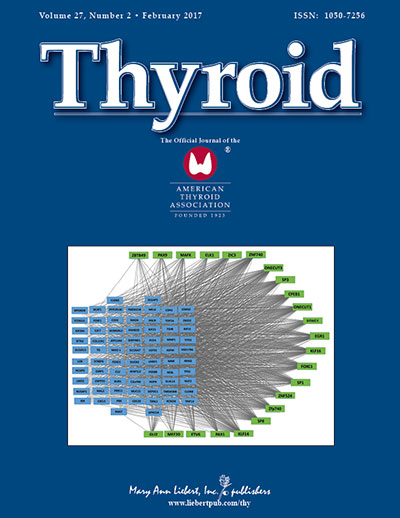 Objective: Previous studies reported significant differences in the clinical presentation and outcomes of papillary thyroid carcinoma (PTC) in pediatric patients compared with adults. Previous studies have suggested that the clinicopathological differences observed between pediatric and adult PTCs may be due the existence of distinct genetic alterations. However, the knowledge of genetic events in pediatric PTCs is based primarily on studies in radiation-exposed PTCs or in the few studies that enrolled predominantly adolescent patients. The aim of this study was to characterize the known oncogenic alterations of the MAPK pathway found in adult and radiation-exposed PTCs in a cohort of predominantly sporadic pediatric PTC patients.
Objective: Previous studies reported significant differences in the clinical presentation and outcomes of papillary thyroid carcinoma (PTC) in pediatric patients compared with adults. Previous studies have suggested that the clinicopathological differences observed between pediatric and adult PTCs may be due the existence of distinct genetic alterations. However, the knowledge of genetic events in pediatric PTCs is based primarily on studies in radiation-exposed PTCs or in the few studies that enrolled predominantly adolescent patients. The aim of this study was to characterize the known oncogenic alterations of the MAPK pathway found in adult and radiation-exposed PTCs in a cohort of predominantly sporadic pediatric PTC patients.
Methods: Thirty-five pediatric PTCs were screened for the most prevalent fusions (RET/PTC1, RET/PTC2, RET/PTC3, ETV6-NTRK3, and AGK-BRAF) and point mutations (BRAFV600E and NRASQ61) described in sporadic pediatric PTCs. The mutational status was correlated with clinicopathological data.
Results: Mutations were found in 20 out of 35 (57%) PTC cases. Fusion oncogenes were the main genetic alterations found. RET/PTC1-3 rearrangements were found in 13 (37%), ETV6-NTRK3 in 3 (9%), AGK-BRAF in 4 (11%), and BRAFV600E in 3 (9%). No mutation was found in NRASQ61. BRAFV600E was associated with older age and larger tumor size (p < 0.05), and RET/PTC3 was associated with a larger tumor size and multifocality (p < 0.05).
Conclusions: The genetic signature in this cohort was remarkably different than that observed in adults. Although observed at a lower prevalence, the spectrum of mutations was quite similar to that described in radiation-exposed pediatric PTCs. As mutations were unidentifiable in over 40% of the PTC cases, more comprehensive studies conducted in these patients will help to decipher the genetic landscape of sporadic pediatric PTCs.


